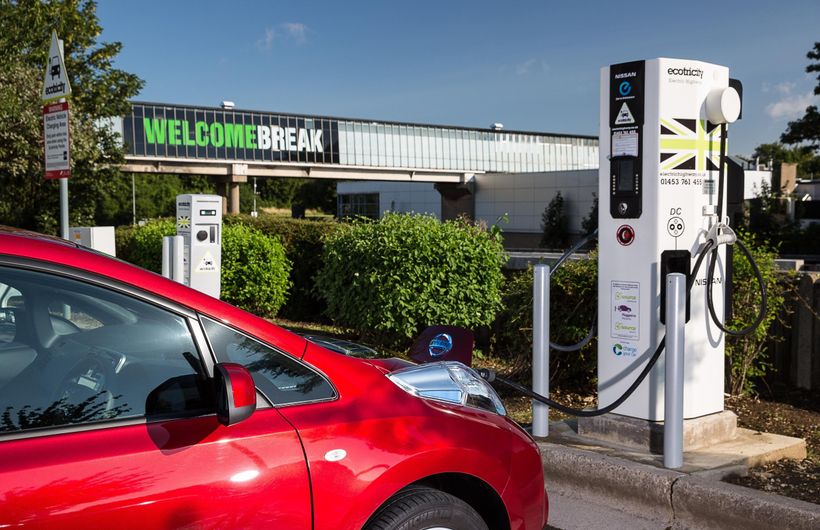I often get asked which electric car I actually own. Well, the answer is that I don’t own one, at the moment. I test them, but there isn’t one on my drive that I’ve actually paid my own money for. Why? Well, the answer is probably the same one as everyone else bar the early-adopters: most affordable pure EVs don’t conveniently cover all that I need to do.
I also plead other mitigating circumstances: I don’t get a huge amount of use out of a personal car because being a motoring journalist requires me to test quite a few different models, so having a load of finance tied up in something flash isn’t on the cards. But I really do want to have my own EV, and I’m getting reasonably close to paying off my current (petrol) car so started having a look at what might be in my price range as a project. Yes, I would be messing with it. No, I really can't help myself.
A new car is pretty much out of the question for budget reasons, so the obvious answer was to have a wander through the used market, specifically the original Nissan Leaf. Being the longest-available volume seller in the game, there’s a large amount of reasonably-priced stock. Something like £8-10 grand will buy you a 107bhp/24kW Leaf. But what about down at the ‘cheap’ end of the Leaf spectrum?
Well, here’s the surprise - even down at the bottom end of the market, the Leaf is holding up surprisingly well in terms of second-hand values. This may just be anecdotal evidence, but it looks like the surge in EV interest is propping up the second-hand prices of the older cars. Obviously you don’t get the big range you can find in more modern small EVs, but they are perfect for general commuting/shop-popping duties as long as they can manage something like 60-miles in all conditions. Thing is, those cars are generally still £5k-plus. And for me, the range is marginal for a car that costs that much.
![Red Nissan Leaf front]() Older Leaf values are really holding up.
Older Leaf values are really holding up. Which led me to start looking at how you might make a Leaf more practical, and from there to a Dutch company called Muxsan. It was co-founded by a pair of deep-tech electric engineering bods called Emile Nijssen and Sjaak Bloemberg, and they upgrade older Nissan electric vehicles to more modern standards. That might mean anything from swapping an entire battery pack to adding in an extra battery pack into a Leaf’s boot to hop-up its range or upgrading the charging system to allow for faster public charging. It’s wise to remember here that by far the most polluting thing a car ever does is to be born in the first place, so this kind of future-proofing is an eminently sensible idea for older cars that need a bit of a pick-me-up to keep them from the scrapheap.
Which all sounds really rather exciting. Except for the fact that such an upgrade - as with most things to do with EVs - isn’t exactly buttons. For a Leaf, you can pick from one of two sizes of ‘extender battery’, at either 8.8kWh (3,990 Euros including warranty, VAT and installation) or 17.6kWh (5,990 Euros). The batteries themselves sourced from a battery re-conditioning company to ‘as-new’ spec, and are usually sourced from modern hybrids. Generally though, you’re looking at pretty much doubling your effective range with the larger extender.
You can also spec fast-charging upgrades to help prop up those extra batteries, so a three-phase charging installation costs 2,990 Euros for 11kW capability, or 4,990 for 22kW - though you do get 500-Euro off that if you’re also buying a large battery upgrade ast the same time. Another slight issue is that the car must be taken to Muxsan’s HQ in Delft, in the Netherlands. It’s about three-and-a-half hours from the Calais end of the Eurotunnel, so is possible, but worth bearing in mind. Most upgrades only require a day or two to install though.
![]() Batteries are more useful than the carrier bags and charity shop donations that usually live in your boot. PIC: Muxsan
Batteries are more useful than the carrier bags and charity shop donations that usually live in your boot. PIC: Muxsan It’s worth noting that the big extender battery also lobs in some 160kg of weight into the boot of the Leaf, so it’s not going to make it feel any nicer to drive. Muxsan does modify the rear suspension slightly to cope - and the cost is included in the price of the larger battery extender - but don’t expect your Leaf to feel more sprightly. So you’re looking at 10,480 euros - roughly £9,329 - for the bigger range-extender plus mighty charger. Which isn’t cheap. But if you already own a Leaf (or bought a cheap 5-6k car), you’d end up with something capable of 180-ish miles of range for around fifteen grand. Which suddenly doesn’t sound so bad.
And while Muxsan is currently focussed on the Nissan Leaf and Nissan e-NV200, the company is also planning similar programmes for electrically-powered Renaults (Zoe, Kangoo ZE), the Mitsubishi i-MiEV and Peugeots like the iOn and Peugeot Partner Electric. And while the second-hand market continues to grow, there’s probably a viable business here. It’s definitely started to make me think about what ‘second-life’ actually means for older EVs. Will I be going down this route? It’s a possibility. We’ll have to see what the rest of this year actually brings.
![Red Nissan Leaf charging at Ecotricity charge point at Welcome Break motorway services]() Muxsan can also upgrade the on-board charger to cut the top-up times
Muxsan can also upgrade the on-board charger to cut the top-up times  Older Leaf values are really holding up.
Older Leaf values are really holding up. 














